It has been an uncharacteristically eventful summer in television! Before we gear up for what’s sure to be an enlightening-as-always pilot season, enjoy our thoughts on the latest and greatest televised offerings of the summer.
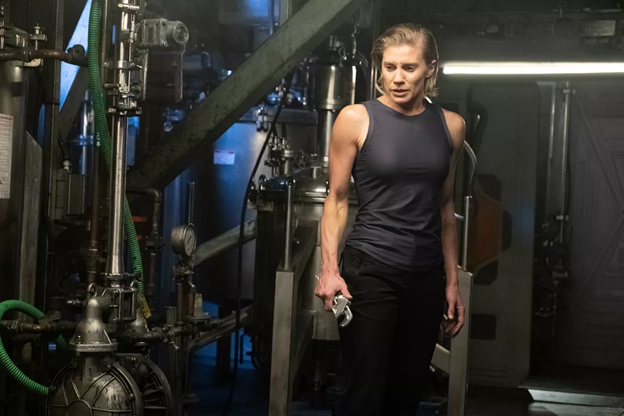
ANOTHER LIFE (Netflix)
Surprisingly, I had mixed feelings about ANOTHER LIFE. One one hand, it languidly drags through a sci-fi-by-numbers story with absolutely no interest in ingenuity or subversion of expectation. On the other, they made some really tight-looking shit. Holo-calls! Infinity ship! Tower of shiny rocks! These incredibly sparkly bois, described with big words that I recognize but don’t understand, make me feel like science is easy and also can make you God. My three remaining brain cells and I are completely okay with challenging entertainment taking a backseat to ego-stroking.
If taken less seriously than it takes itself, ANOTHER LIFE has the makings of a good ol’ fashioned schlokfest. But boring B-plots and sheer predictability are dangerous indicators that, like so many of our beloved gizmos and gadgets, this is designed to break after a year. Netflix’s wide net strategy when it comes to programming inevitably yields these competent but empty formula dramas (see: TIDELANDS, PARANOID) that hit enough keywords to garner some curious clicks but have no long-term plans as a TV show. Thus, ANOTHER LIFE’s entertainment value depends on how wildly it swings during its death knell of a season finale. Hopefully someone sticks around to tell me how it is. [Dan Blomquist]
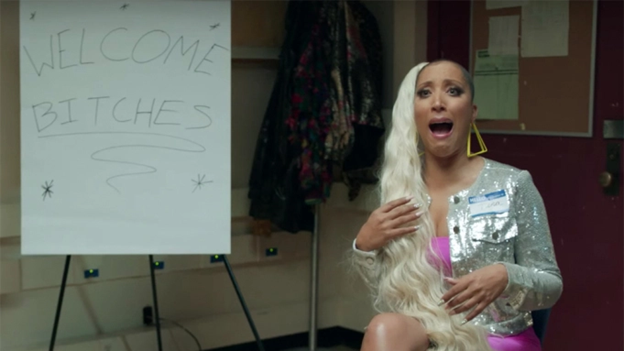
A BLACK LADY SKETCH SHOW (HBO)
Hot off the heels of sketch darling I THINK YOU SHOULD LEAVE comes yet another entrant into this year’s most tantalizing TV offering since the limited series. I’ve always been someone who appreciated any content that knows what it is, is open about what it is, and delivers what it promises. To this respect, it’s hard to think of a better example than A BLACK LADY SKETCH SHOW. It is—indeed—a sketch show starring, written, directed, and produced by an entire cast of black women. You’ll recognize Executive Producer Issa Rae of INSECURE, and you’ve probably seen main cast Robin Thede, Ashley Nicole Black, Gabrielle Dennis, and Quinta Brunson on the comedy and late night correspondent circuits—but other than an impressive roster of guest stars (Laverne Cox, Nicole Byer, Angela Bassett), these are all relatively new faces to the mainstream.
It’s worth acknowledging what a cool achievement this is. While on-camera representation is certainly improving for black women (thank you, Shonda!) there is still a long ways to go behind the scenes—particularly in the writers’ room and the directors’ chair. Even if this show fizzled out for whatever reason, it’s still a step forward to see something brought to life on TV’s most prestigious network by an entire team of black women.
But good news everyone—because this show Fucking. Ruuuuuules. I’m not exactly the stated audience for this show, but god damn if I wasn’t busting up laughing at every turn. I have made my appointment to get “Eeyore in Dior” tattooed across my chest. And it’s not just funny: an overarching narrative ties the whole thing together in a way that points only to stellar writing and construction. There’s also a larger thinkpiece to be written by someone who’s not me about how black comedy in 2019 is horror, and I could spend hours trying to unpack the bizarre horror element present in this series. It’s not just a great show made by black women. It’s not just a great sketch show. It’s a great show. [Kate Brogden]
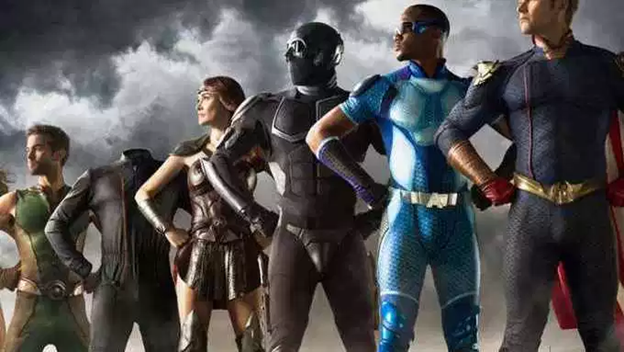
THE BOYS (Amazon Prime)
Picture it: 2014, Heroes Comics. Me, a lone comic fan searching for something to fill the graphic novel-shaped hole inside my heart. I noticed a back issue of something from Garth Ennis called The Boys peeping out from behind the “New” bin. I reached for it, and it was love at first sight. I obsessively collected and read every issue, and so when I heard Amazon was adapting it as a television series, I became the human embodiment of that one .gif of Jonah Hill squeeing at stuff. I was hype. HYPE. So, for the hardcore fan of The Boys comics, does the Amazon show measure up?
YES IT FUCKING DOES!
There are definitely some things changed or shifted around for storytelling purposes, but all the changes are organic to the story they’re telling and still keep the ultimate spirit of the comics alive. The spirit of cynicism. You see, Garth Ennis is a notorious Superhero hater, and THE BOYS focuses on what would actually happen if people truly did have superpowers? Would they use them for the good of humanity out of their own free will? Ha ha, you sweet summer child, of course not. They would be huge fucking dicks who ran amok while capitalist America raked in money hand over fist from the merchandising. Of course, super humans (or “Supes” as they are declared within the show’s universe), running around unchecked is kind of a problem—enter The Boys. A somewhat shady team led by Billy Butcher (Karl Urban) whose main mission is: take down every Supe they can find.
The plot mostly focuses on Hughie, a young New Yorker whose fiancée is taken from him in a tragic accident when A-Train (the show’s stand-in for The Flash) runs right into her at top speed and she explodes into blood and guts. Butcher recruits him for The Boys, and history is made. We also meet Starlight, a new recruit into The Seven (essentially the A-list of Superheroes) who quickly learns that being a Supe isn’t all the goodness and light she thought it was.
With SUPERNATURAL’s Eric Kripke as showrunner, The Boys as a television show holds up well for people who are fans of the comics, and does a good job of bringing new viewers who were unaware of the comics into the story. There isn’t nearly as much blood, guts, and naked people as there are in the comic, either, and so for viewers who are aware of the comic but may be a bit squeamish about that: you’re safe. Although there is a bomb of plastique up someone’s ass at one point. It’s fine. Don’t think about it too much.
There are times when it slows a little and it is a bit frustrating for us comic fans that the entire team of main characters aren’t brought together by the end of the second episode, but it happens eventually, and everything else is satisfying enough that it can be overlooked.
The entire first season of THE BOYS can be viewed on Amazon—you can find compilations of every issue of the comic at pretty much any comic book store, and both come with my highest recommendation. [Anna Mansager]

BULLETPROOF (The CW)
You know it’s summer when a network just buys a British cop show and calls it a day. BULLETPROOF’s appeal to Americans seems to be “Hey, remember LETHAL WEAPON? Wasn’t that fun? Well, we also have fun here in the UK!” But the extravagant destruction that constituted fun in the ‘80s has to be at least slightly tempered to work in 2019. To overcome the tired concept and the inherent baggage cop shows now carry, BULLETPROOF needs to deliver some seriously gut-busting punches. It delivers on this promise, but only on accident.
The comedy writing that’s supposed to elevate this above other collections of Cop Action Footage connects sparingly, but because I find British slang inherently hilarious, I laughed a good bit at this pilot. A routine argument in which lead cop Bishop (Noel Clarke) angrily declares that he doesn’t get angry slayed me because of how it’s phrased: “I don’t get vexed, bruv!” But beyond the simple joy of unfamiliar linguistic memes, BULLETPROOF doesn’t have much to offer that you can’t find on literally any other program about the police. To put it simply: It’s bollocks rubbish that innt fit to wash me bangers and mash, bruv. [Dan Blomquist]
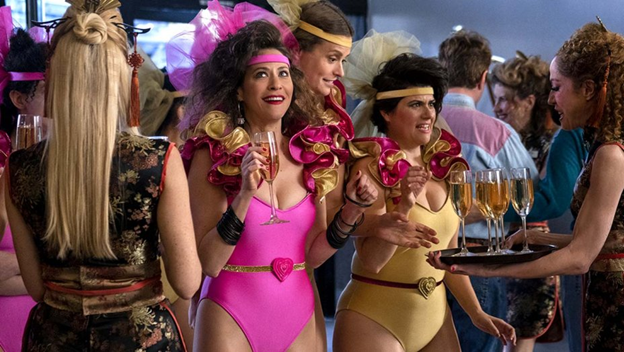
GLOW S3 (Netflix)
I mainlined the first two seasons of GLOW in less than 24 hours, a feat that is far less impressive than it sounds when you consider each 10-episode bundle lasts about as long as your average Kurosawa movie, but after blowing through Season 3 with similar alacrity, I really have to wonder if my voracious appetite for Netflix’s womens’ wrestling dramedy stems from genuine obsession or simply the limitations of half-hour narratives. With a shift in priorities and a need to justify some of its more ancillary material, GLOW’s latest offering takes a lot of risks that trap me between applauding their good intentions and pointing out their obvious foolhardiness.
Season 3 opens with GLOW moving onstage to Vegas after its TV cancellation, a move that the producers say will better showcase the show’s outlandish theatrics. It’s ironic, then, that Season 3 pushes its biggest stars, Alison Brie and Marc Maron, to the backburner in order to accomodate a more ensemble presentation. The latter is exiled to LA (largely offscreen) for half the season, while the former ends her year in Vegas exactly where she started it, making for one of the most stillborn TV arcs I’ve seen since spring’s THRONES finale. The chemistry between the two was the driving force of the previous seasons, and relegating them to the sidelines does no favors for the show’s Vegas season.
In their place, the show attempts to place greater emphasis on the supporting cast, with very mixed results. Comprising most of the “good” list, Betty Gilpin’s Debbie gets center stage as she spectacularly stumbles through the conflicting responsibilities of mother, producer, and star of the show, as well as grappling between her relationship with a charming rancher (Toby Huss) and her desire to strike out on her own as a fledgling media mogul. This last desire is largely stoked by Sandy, a former showgirl-turned-manager played by guest star Geena Davis, whose cameo is one of the more welcome diversions provided by the change in locale. Gayle Rankin also gets a mention, as the show finally allows her character to blaze new territory outside of her on-and-offstage “She Wolf” persona.
The rest is pretty messy. The remaining Gorgeous Ladies Of Wrestling have always been more caricatures than characters, and Season 3’s hasty attempt to play catch-up fails to make them appear any more nuanced than their one-note wrestler personas. Yolanda is gay. Jenny is Asian. Arthie is gay and Asian. Most of these characters’ scenes involve them navigating portrayals and perceptions of these traits, resulting in several reductive theme episodes that fail to flesh them out beyond these surface-level identifiers. In trying to branch out from its straight, white central cast, GLOW’s third season relegates its most marginalized characters to a Greek chorus that unfortunately accentuates its tokenism, rather than dispelling it.
Were GLOW able to dedicate a full hour to each episode, I doubt that any of these issues would exist. While GLOW’s abbreviated runtime is highly bingeable, there’s only so much character development that can be accomodated in the span of five hours, and the concessions Season 3 makes to pick up the slack never feel like worthy sacrifices. Whether this streaming-friendly format is viable for dramatic narratives is a separate discussion of its own, but suffice to say that GLOW fans will find that Season 3 plays like a vacation from earlier outings, for both better and worse. [Ed Dutcher]
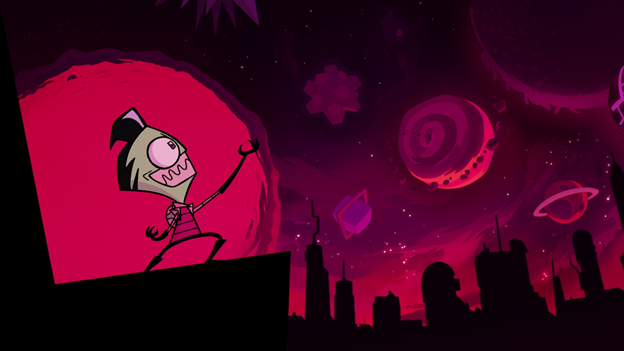
INVADER ZIM: ENTER THE FLORPUS (Netflix)
Buckle up, 2000s kids, your nostalgia is now marketable and the desperate desire to pretend middle school wasn’t a nightmare only strengthens the armies of Netflix. In a conceit similar to ROCKO’S MODERN LIFE: STATIC CLING, we reunite with the members of the Membrane family years after Zim’s last appearance. As the only person on the planet that sees Zim as a threat, Dib has been ceaselessly monitoring Zim’s home from a chair in his bedroom. When Zim finally does reappear for Phase Two of preparing Earth for domination, both are wildly unprepared; Dib has been sitting for so long he’s “more chair than man” and Zim has straight-up forgotten Phase Two. After Zim realizes that The Almighty Tallest never planned on joining him on Earth and in fact sent him away, he has to come up with a plan to finally get the attention and respect he feels he deserves.
Because this was released in 2019 there are subtle but definite differences between the animation style of FLORPUS and OG ZIM. INVADER ZIM was always distinguished by myself growing up for its jerky, whiplike, and even rapid-fire animation. Every character was prone to random jerking and screaming and it was all the more off-putting. In FLORPUS, characters’ mouths move more naturally, and their limbs tend to move smoothly, and while there is plenty of dramatic posing and over-the-top shouting, those movements feel much more purposeful or are otherwise highlighted. It’s not that this is a bad change by any stretch, it feels more like an evolution than anything else.
Back in 2015 the Invader Zim comic books were announced and have been going steady to this day. When discussing the comics as a continuation of the show, creator Jhonen Vasquez said “I’m always confused when people say how much they miss INVADER ZIM because the show never stopped running in my head, and then I remember everyone else isn’t in my head.” As the characters have evolved and changed over the course of the comics, of course those changes would be reflected in FLORPUS. As a result there’s more character changes that make things run a little deeper than the kids in Hot Topic screaming about tacos would let on. There’s more exploration of the Membrane family as a unit, and while they don’t get into Dib and Gaz’s mother, the fact that the characters feel more rounded is already a departure. Honestly, it’s a little jarring when Gaz admits that she only torments Dib because that’s what siblings do, and there’s nothing truly malicious behind it. It almost feels inauthentic in its authenticity. It’s plain that Vasquez has grown and developed as a creative and as a person since we last saw Zim and Dib.
That being said, there’s plenty of whacked-out gags and quips from GIR in FLORPUS, enough to keep your Neopets signature fresh for months. FLORPUS does the obligatory “look at all these assets from past episodes” walkthrough which is fine, as the movie is what it is, but it’s nice that at least one of those ends up featuring majorly in the plot. Kids that grew up liking INVADER ZIM ended up liking ADVENTURE TIME, and then moved on to RICK AND MORTY for their madcap sensibilities and the hint (sometimes stronger) that it knew it was smarter than it seemed, and the writers of FLORPUS know this. Hell, Justin Roiland even makes an appearance as a chef robot charged with cooking the kids’ meals. INVADER ZIM: ENTER THE FLORPUS contains the DNA of these shows and as a result is immensely satisfying to watch as a fan of the original series. [Steven Porfiri]
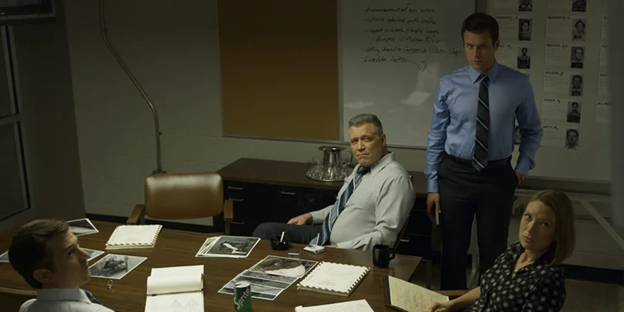
MINDHUNTER S2 (Netflix)
As resident Merry-Go-Round true crime junkie, the first season of MINDHUNTER knocked my dang socks off. Rather than elevating serial killers to antiheroes and farming grisly murders for racy content, MINDHUNTER used true crime as a backdrop to tell the compelling character stories of Professor Wendy Carr, Agent Bill Tench, and—mostly—young upstart Holden Ford. Ford’s psychological love affair with serial killers, Ed Kemper in particular, stood out in a saturated market for its examination of why these men are dangerous psychopaths (and sometimes straight up bumblebutts)—and the dangers of elevating them and empathizing with them too much.
MINDHUNTER S2 picks up right where we left off: Holden is reeling from a breakdown brought on by World’s Most Powerful Hug, Tench is Stern Square Daddy, and Wendy is giving me RBF for the gods. A new Big Man In Charge at the Bureau puts the spotlight on their experimental true crime operation, and our team finds themselves embroiled in an ongoing investigation of 30 child murders in Atlanta—a steep departure from their usual research-heavy focus.
I like this show a lot! MINDHUNTER is a series that does a lot of things well, and does a lot of things I like. For one, I want Fincher to direct everything true crime forever. The stripped-down aesthetic and focus on conversations rather than setpieces allows the performances and the writing to shine. It adds to the reverence of MINDHUNTER toward its subject, always a plus when it comes to the blood and guts side of things. Season 2 in particular turns its eye toward race relations and LGBT issues, which while present in S1 to a degree, are brought to the forefront here in a way that adds a lot to an already strong series.
Without getting into spoiler territory, the second half of the season leans pretty heavily into its procedural elements and leaves behind many of its character threads. Where the climactic moment of Season 1 was Holden’s big character realization that he’s in too deep, the climactic moments of Season 2 are much more plot-driven. That being said, I’m along for the ride the whole way, and if you liked the first season you’ll like this one, too. My only hope is that this doesn’t become another great Netflix series cut down in its prime. [Kate Brogden]
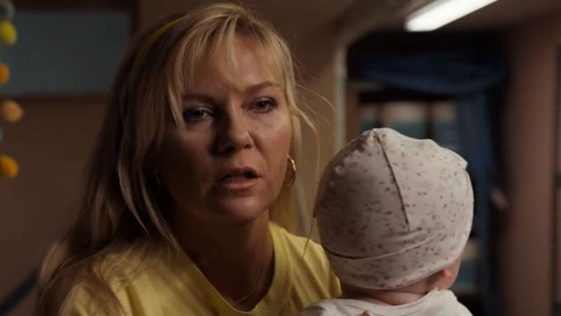
ON BECOMING A GOD IN CENTRAL FLORIDA (Showtime)
Here’s the thing, dear reader: even if I told you ON BECOMING A GOD IN CENTRAL FLORIDA was the best show television has ever sneezed in the direction of, would you watch it? That’s more or less what I did twice last year with PATRICK MELROSE, and be honest with me, how many of you heeded my recommendation? Yeah, that’s what I thought. Here’s the real tea: accessibility matters in 2019, and Showtime is simply too damn hard to get to! It’s technically less pricey on its own right than HBO, but c’mon, it’s not HBO, and the most obvious way to get to it otherwise is adding a dummy expensive add-on to your already price Amazon Prime subscription. All of this is to say is that ON BECOMING A GOD IN CENTRAL FLORIDA is destined to become yet another critically acclaimed show you’ll ignore. It’s good! How could it not be! Despite Sofia Coppola really being the only film director to fully make use of Dunst’s acting chops, her turn in FARGO S2 is a godsend, and she once again entirely commandeers the small screen here. Plus, as you may have heard, Alexander Skarsgård’s nearly unrecognizable, pilot-exclusive extended bit part as Dunst’s ill-fated beau is the stuff of Keanu Reeves-in-ALWAYS BE MY MAYBE legend, and the overall concept of local yokels being absorbed by sinister pyramid marketing schemes feels particularly relevant and applicable to our modern economic times despite the show taking place in the ‘90s. As with many dark comedies, it’s better at being dark than being a comedy, but the pilot knocks it out of the park in terms of setting up a mission and drive for Dunst’s Krystal going forward. But again, are you going to subscribe to Showtime to watch it? No! So I guess you’ll have to sleep easily at night knowing that ON BEING A GOD IN CENTRAL FLORIDA (and PATRICK MELROSE, RIP) were two solid shows you let slip by. [Thomas Seraydarian]
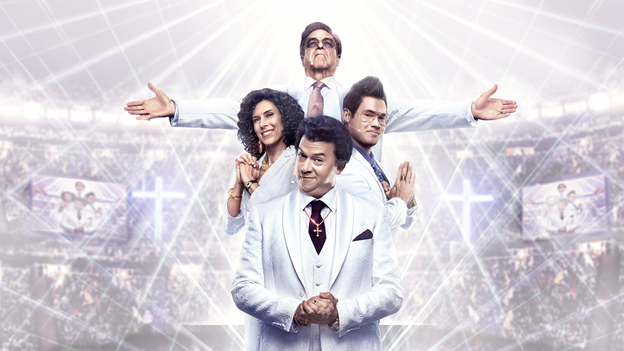
THE RIGHTEOUS GEMSTONES (HBO)
Nothing beats the feeling of a show you’ve been excited about for over a year being as good as you hoped it would be. My love of Southern liars with sunny dispositions is well-documented (as is my love for never-even-been-nominated-for-an-Oscar John Goodman). My initial response to GEMSTONES’ announcement over a year ago was, “Oh—this is exactly my shit.”
And indeed, dear reader, this is exactly my shit.
It’s got comedy. It’s got intrigue. It’s got milquetoast praise band flashbacks. The characters are certainly archetypes of the Christian Evangelical community (literally can’t wait for Youth Pastor Adam Devine to fuck a teen), but their cookie-cutter facades betray complicated interiors. It’s a perfect marriage of excellent writing, excellent performances, and excellent production. It’s everything we’ve learned to expect from HBO, and it’s got me looking forward to integrating a Bible-thumping megachurch into my Sundays for the first time in a long time.
HBO’s loss of GAME OF THRONES is starting to feel less like a gaping void in its programming, and more like the network has finally gotten rid of its shitty boyfriend that was holding it back. CHERNOBYL, YEARS AND YEARS, BLACK LADY SKETCH SHOW, EUPHORIA, and now RIGHTEOUS GEMSTONES… HBO is blasting “Truth Hurts”, has a sexy new haircut, and is leaving Benioff and Weiss on read. Yas kween. Slay. [Kate Brogden]

ROCKO’S MODERN LIFE: STATIC CLING (Netflix)
Buckle up ‘90s kids, your nostalgia is officially marketable and the deep yearning you feel to return to the days of elementary school only makes Netflix grow stronger. With what feels like a probing touch for future ventures, ROCKO’S MODERN LIFE has returned for a barely TV-movie-length adventure. After revealing that Rocko, Filbert, Heffer, and Rocko’s dog Spunky have either been in a low-earth orbit or drifting through space for 20 years subsisting on couch crumbs and ‘90s TV (#relatable, am I right, fellow kids?), the gang suddenly returns to O-town to find that the inevitable march of time has ravaged the town and everything they once held dear. Also now there’s iPhones.
The first 15 minutes of STATIC CLING feels like a series of Old Man Yells at Cloud jokes dunking on iPhones, the Apple Watch, and Apple’s habit of releasing the latest and greatest thing every couple of minutes, the near-ubiquity of Starbucks, and even energy drinks and food trucks. Because of Rocko’s now Ultra-Modern Life, Rocko figures that the only thing to keep him sane would be to watch his favorite show The Fatheads, but dang it all if it, like so many classic TV shows, wasn’t cancelled and no longer airs. Rocko and his friends decide that the only thing to do is to track down Ralph Bighead, the former showrunner.
The Internet Discourse was truly buzzing over STATIC CLING, and it wasn’t about all the weight the Chokey’s Chicken mascot lost. Upon finding the Fatheads’ reclusive showrunner, Rocko and his friends are introduced to Rachel Bighead after Ralph comes out as trans. Given everything else about this show, a trans storyline sounds like the most problematic thing it could tackle, but the writers worked with GLAAD while developing certain aspects of STATIC CLING, and they receive a special thanks in the credits. As a result it’s nowhere near as grating as one would think. Rachel simply says “I’m not Ralph anymore, I’m Rachel,” to an almost awestruck Rocko, Heffer, and Filbert. Thus begins the true theme of STATIC CLING, which is learning to accept change in all its forms, especially when they’re personified by Tom Kenny as The Winds of Change. There is a plot point where Mr. Bighead doesn’t immediately accept his new daughter, but it’s smoothed over in order to barely squeak by a 40-minute runtime.
While there is a lot of middle-aged men shaking their fists that can be felt throughout the cartoon (there’s a jab about CG animation being soulless), it ultimately tells viewers that just because things are different from how they used to be, that doesn’t mean they’re bad. ROCKO tries to smush in as many characters and bits as they can from their four-season run (Holy shit, Tom Kenny and Carlos Alazraqui were almost half the voice cast!), and while I was never a big ROCKO kid, I remembered enough to get most of the gags, like the story being told through Really Really Big Man’s nipples. It’s also self-aware enough to know what it’s doing in a lot of ways, and while jokes about food trucks can get old, news ticker sight gags are truly eternal. ROCKO’S MODERN LIFE: STATIC CLING is a nice-enough jaunt if you’re really jonesing to revisit the characters, but be aware that things might not be where you left them. [Steven Porfiri]


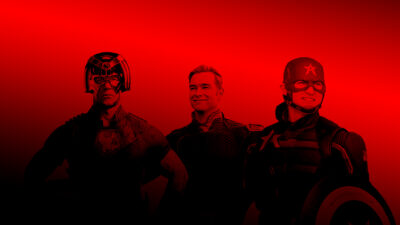
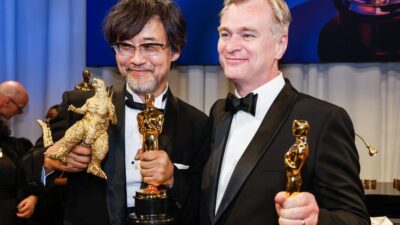

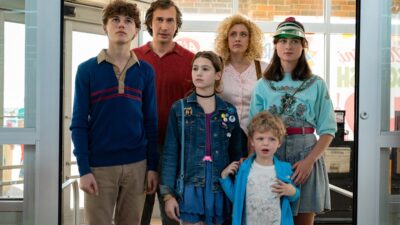
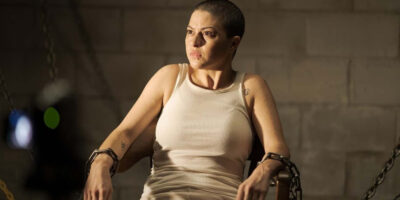

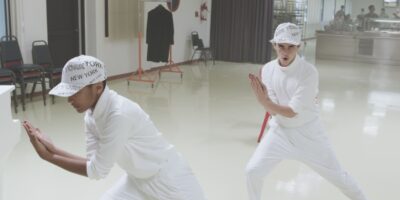

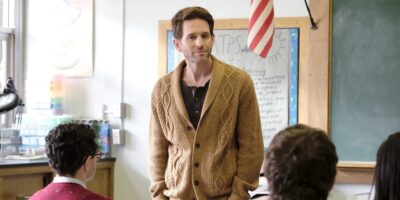





Comments